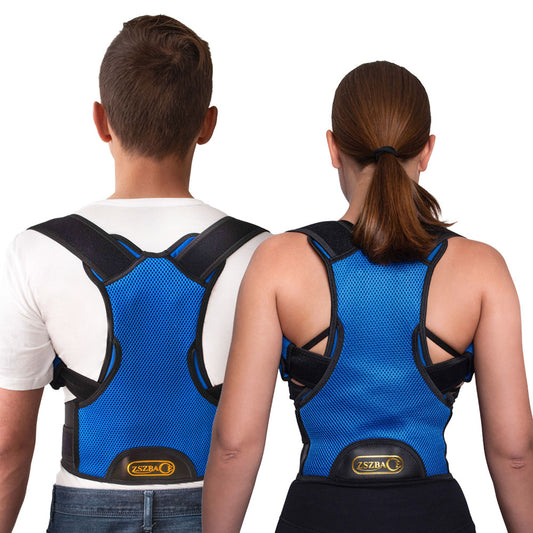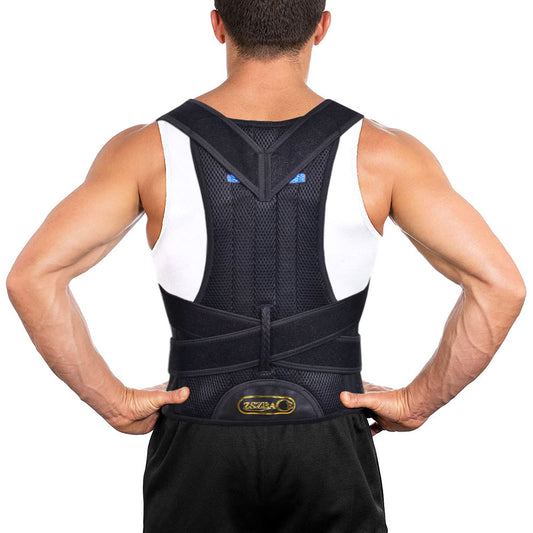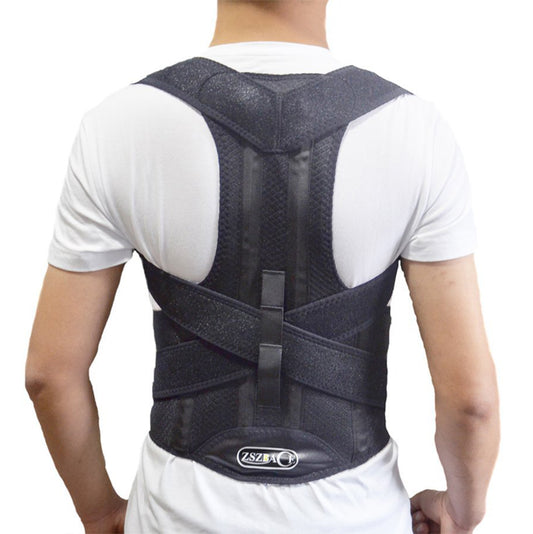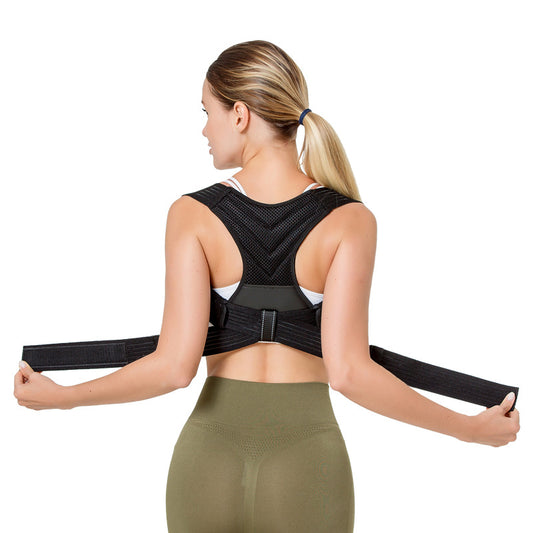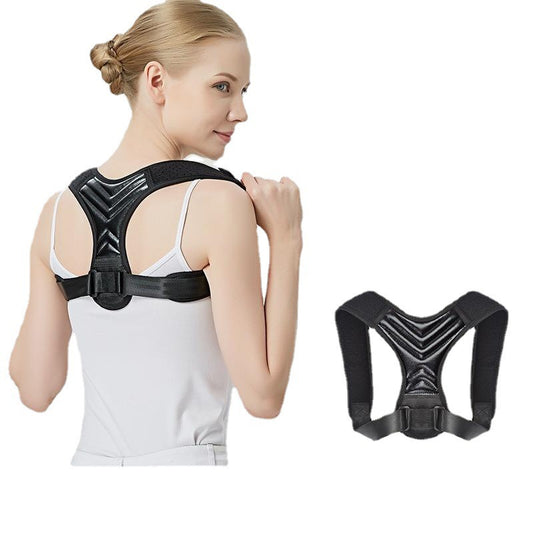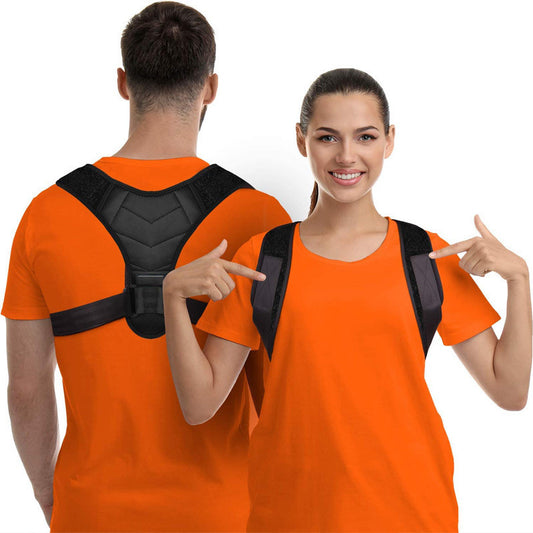-
Posture Corrector for Men and Women Adjustable Upper Back Brace for Clavicle to Support Neck, Back and Shoulder (Universal Fit, U.S. Design Patent)
Regular price $25.00 USDRegular price -
Back Support Belts Posture Corrector Back Brace Improves Posture and Provides For Lower and Upper Back Pain Men and Women
Regular price $36.00 USDRegular price$38.00 USDSale price $36.00 USDSale -
NEW Upgraded Back Brace Support Belt for Upper back, Neck and Shoulder Pain, Invisible Posture Corrector, Premium Material with Convenient Design for Daily Use
Regular price $36.00 USDRegular price$38.00 USDSale price $36.00 USDSale -
Back Brace Posture Corrector Clavicle Support Brace Medical Device to Improve Bad Posture, Thoracic Kyphosis, Shoulder Alignment, Upper Back Pain Relief for Men and Women
Regular price $37.99 USDRegular price$45.99 USDSale price $37.99 USDSale -
New adjustable sitting posture corrector back correction breathable clavicle belt invisible correction belt
Regular price $49.99 USDRegular price$65.00 USDSale price $49.99 USDSale -
2025 Upgraded Back Brace Support Belt for Upper back, Neck and Shoulder Pain, Invisible Posture Corrector
Regular price $58.00 USDRegular price$72.00 USDSale price $58.00 USDSale -
Posture Corrector for Women & Men - Fully Adjustable Straightener for Mid - Upper Spine Support- Neck, Shoulder, Clavicle and Back Pain Relief-Breathable
Regular price $38.00 USDRegular price$52.00 USDSale price $38.00 USDSale -
Back Posture Corrector for Women & Men with Back Support,Adjustable Upper and Middle Back Brace for Posture Improves,Breathable Back Straightener and Pain Relief
Regular price $45.00 USDRegular price$55.00 USDSale price $45.00 USDSale
Collection: Scoliosis Brace : Advanced Support for a Balanced Spine
Scoliosis Brace Collection: Advanced Support for Spinal Health
Scoliosis, a condition characterized by an abnormal curvature of the spine, affects many individuals globally. The aim of our comprehensive collection is to offer effective solutions to manage and support spinal health while preventing further curvature. With our expertise in the manufacture of scoliosis braces, we ensure that our products are made from top-quality materials and offer professional customer support and after-care. Explore our collection and find the brace tailored for your needs.
Who Needs a Scoliosis Brace?
- Children and Adolescents: Growing children with scoliosis can benefit significantly from bracing as it can slow the progression of the spinal curve.
- Adults with Spinal Curvature: Adults experiencing discomfort or difficulties in daily mobility can also find support and relief through bracing, although it cannot permanently correct the curve.
- Individuals with Postural Issues: Posture improvement braces aid those suffering from conditions like thoracic kyphosis or upper back pain.
Why Use a Scoliosis Brace?
A scoliosis brace is crucial in managing the development of spinal curves, primarily for growing children and adolescents, where it helps:
- Prevent Curve Progression: It reduces the likelihood of needing surgery in the future by preventing worsening curvature.
- Encourage Spinal Alignment: By applying pressure, a brace can help maintain a corrective posture.
- Alleviate Symptoms: Adults experiencing back pain and discomfort due to minor curves may also notice relief.
How to Determine Suitability for a Scoliosis Brace
Determining the need for a scoliosis brace involves:
- Medical Evaluation: Routine check-ups to assess curve severity using X-rays or other imaging technology.
- Symptom Assessment: Signs such as uneven shoulders, waist, and hips, or persistent back pain.
- Curve Degrees: Typically, a brace is employed when the spinal curve measures between 25 to 40 degrees.
Unique Features of Our Scoliosis Braces
Our scoliosis braces are meticulously crafted to offer:
- Premium Materials: Durable and lightweight for long-term wear.
- Adjustable and Comfortable Fit: Ensuring maximum effectiveness and comfort.
- Invisible Design: Discrete enough for everyday wear.
We are the ZSZBACE brand, leveraging years of experience in research and manufacturing to provide exceptional products that cater to your spinal health needs.
Addressing Common Questions
What Symptoms Indicate the Need for a Scoliosis Brace?
- Uneven shoulder and waist alignment.
- Pain during activities necessitating posture support.
- Noticeable spinal curve when bent forward.
Who is a Scoliosis Brace Suitable For?
- Growing Children: Primarily for growth-phase control.
- Individuals with Mild to Moderate Curve: Ideal for nonsurgical management of scoliosis.
Can Scoliosis Braces Straighten the Spine?
Although braces cannot permanently straighten the spine, they are effective in managing the curvature progression, particularly during growth years.
Related Products for Enhanced Support
In addition to scoliosis braces, we offer a range of complementary support devices:
- Upgraded Back Brace Support Belt: Ideal for upper back, neck, and shoulder pain.
- Posture Corrector for Back, Shoulder, and Neck: Enhances posture while relieving back pain.
- Adjustable Back Support Brace: Provides additional back support and improves posture.
Experience the blend of precision engineering and expertise with our products designed to meet your spine health needs seamlessly. Along with the high-quality materials and advanced technologies, ZSZBACE ensures each brace is designed to assist in your daily activities, improving life quality and mobility.
Conclusion: Committing to Spinal Health
Selecting a scoliosis brace from ZSZBACE means opting for a product backed by scientific research and tailored to effectively address spinal imbalances in users of all ages. Trust our expertise and dedication to deliver comfort, ease, and top-notch spinal care through our extensive collection of scoliosis braces and related support products.


